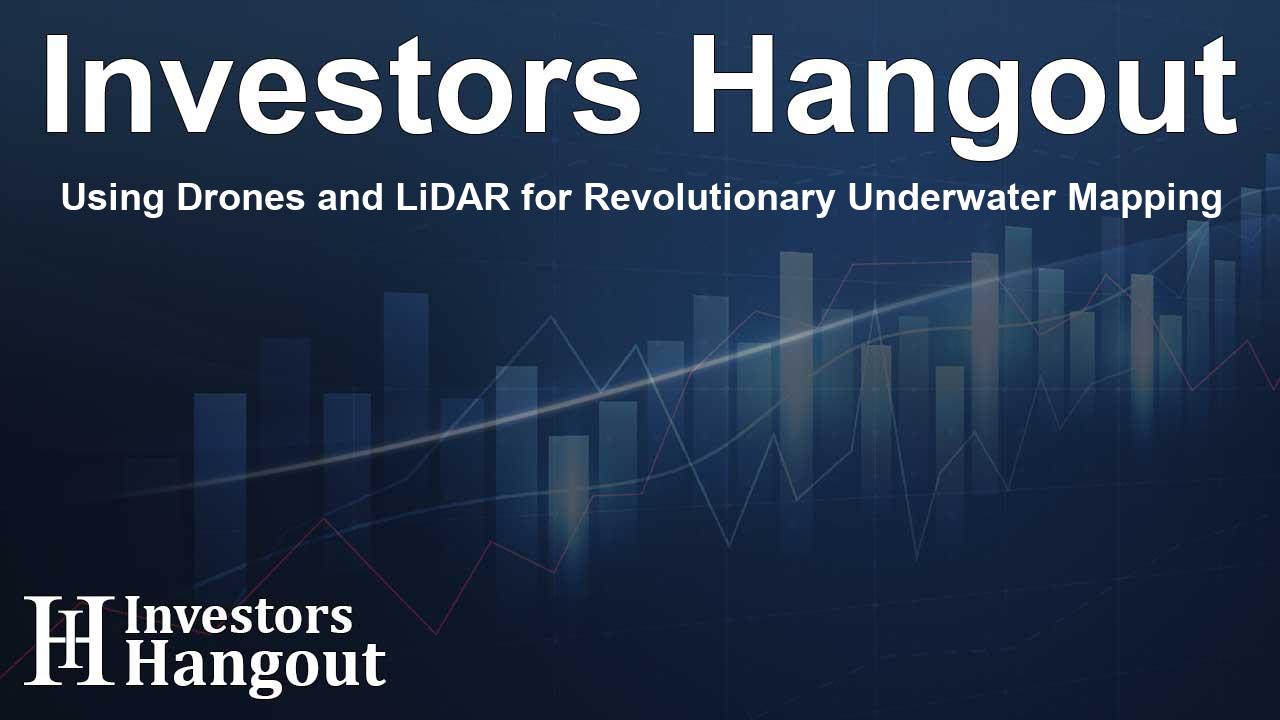Using Drones and LiDAR for Revolutionary Underwater Mapping

Innovations in Underwater Mapping Technology
In recent years, the use of LiDAR (Light Detection and Ranging) technology has expanded into many sectors, including the vital field of underwater mapping. This advanced mapping technique enables precise depth measurements of waterways, leading to improved safety for marine navigation. Traditionally, underwater mapping relied on sonar or manual depth soundings, but technological advancements have ushered in the use of unmanned drones equipped with bathymetric LiDAR systems to enhance both efficiency and accuracy.
The Growing Appeal of Bathymetric LiDAR
The interest in bathymetric LiDAR continues to flourish, with the global LiDAR market projected to escalate significantly in the coming years. In a recent industry analysis, it was revealed that this market could reach around $13.74 billion, indicating compounded annual growth driven by the need for high-quality mapping in sectors such as environmental monitoring and infrastructure development. One of the fascinating aspects of bathymetric LiDAR is how it utilizes laser pulses to create three-dimensional images of underwater landscapes, providing crucial data about the seabed and surrounding marine environments.
The Advantages of Drone Deployment
Employing unmanned drones for these surveys yields numerous advantages. Drones equipped with bathymetric LiDAR can cover extensive areas rapidly, allowing for the collection of data that was previously time-consuming and expensive to gather. Moreover, using drone technology minimizes the risks associated with traditional survey methods, where survey vessels might face challenges or hazards from rough water conditions. Drones eliminate the need for personnel to enter potentially dangerous environments and offer the capability to efficiently map both land and underwater terrains.
Rapid Data Collection and Analysis
One of the standout benefits of using green light in bathymetric LiDAR is its ability to penetrate deeper into the water compared to other wavelengths. This method captures accurate measurements of underwater landscapes while also showing resilience against inaccuracies caused by sediment or algae in the water column. As a result, drones significantly enhance the speed, accuracy, and dependability of data collection for hydrographic surveying, which is essential for various applications including aquatic development, environmental assessments, and archaeological studies.
The Future of Drone Technology in Mapping
In light of these developments, companies are actively exploring innovative uses for drone technology in different fields. For instance, ZenaTech, Inc. is advancing its Drone as a Service (DaaS) model to incorporate bathymetric surveys that can revolutionize underwater mapping for commercial and governmental clients. Their recent acquisition of Wallace Surveying has amplified their capabilities to deliver high-resolution underwater mapping crucial for effective water management and sustainable ecological practices.
Collaboration and Expertise
ZenaTech’s collaboration with the seasoned professionals at Wallace Surveying highlights the integration of expertise necessary to expand their offerings. Utilizing these capabilities ensures access to cutting-edge technologies that refine both survey quality and operational efficiency. This collaborative aspect allows for the sharing of knowledge and resources, enabling ZenaTech to effectively meet the demands of their clients while upholding high standards in underwater mapping services.
Broader Market Impact and Developments
The impact of bathymetric mapping extends beyond mere data collection; it influences multiple industries, such as agriculture, urban planning, and disaster management. By leveraging advanced drone systems and bathymetric LiDAR technology, users can make informed decisions that support the sustainable use of water resources, optimize development projects, and assess environmental changes. The continual evolution within this space remains promising, with active companies like AeroVironment and Teledyne Technologies also making strides in drone technology integration for various operational applications.
Frequently Asked Questions
What is bathymetric LiDAR?
Bathymetric LiDAR is a remote sensing method that uses laser pulses to measure underwater depths and create detailed maps of the seabed and adjacent land areas.
How do drones enhance bathymetric mapping?
Drones equipped with bathymetric LiDAR can cover large areas quickly, reduce operational risks, and provide accurate data while eliminating the need for manned survey vessels.
What industries benefit from bathymetric surveys?
Industries such as environmental monitoring, infrastructure development, agriculture, and archaeology can leverage bathymetric surveys for better planning and resource management.
Why is green light used in bathymetric LiDAR?
Green light is effective for penetrating deeper into water and is less affected by sediment, thus providing more accurate depth measurements compared to other wavelengths.
How is ZenaTech involved in drone technology?
ZenaTech, Inc. is expanding its Drone as a Service (DaaS) offerings to include bathymetric surveys, driven by advancements in drone technology and partnerships with experienced surveying teams.
About The Author
Contact Thomas Cooper privately here. Or send an email with ATTN: Thomas Cooper as the subject to contact@investorshangout.com.
About Investors Hangout
Investors Hangout is a leading online stock forum for financial discussion and learning, offering a wide range of free tools and resources. It draws in traders of all levels, who exchange market knowledge, investigate trading tactics, and keep an eye on industry developments in real time. Featuring financial articles, stock message boards, quotes, charts, company profiles, and live news updates. Through cooperative learning and a wealth of informational resources, it helps users from novices creating their first portfolios to experts honing their techniques. Join Investors Hangout today: https://investorshangout.com/
The content of this article is based on factual, publicly available information and does not represent legal, financial, or investment advice. Investors Hangout does not offer financial advice, and the author is not a licensed financial advisor. Consult a qualified advisor before making any financial or investment decisions based on this article. This article should not be considered advice to purchase, sell, or hold any securities or other investments. If any of the material provided here is inaccurate, please contact us for corrections.
